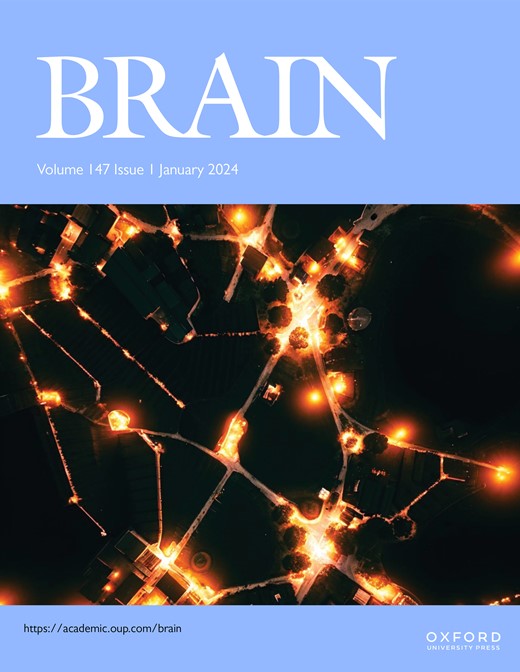人脑的矢状旁硬脑膜间隙
IF 11.7
1区 医学
Q1 CLINICAL NEUROLOGY
引用次数: 0
摘要
历史上对脑脊液产生和流动的理解包括脑脊液主要在第1 -3脑室的脉络膜丛中产生,通过Sylvius输导管流向第4脑室,在蛛网膜下腔周围循环,最终通过蛛网膜颗粒被吸收进入血液循环。自2012年和2015年发现位于小鼠硬脑膜的淋巴血管的血管周围脑脊液清除系统以来,人们对硬脑膜窦周围组织或旁矢状硬脑膜(PSD)空间的结构和功能的研究越来越感兴趣。这项工作现在正在越来越频繁地进行,以了解PSD空间如何与受损的神经液体排出或神经免疫功能相关,目的是进一步告知我们对神经退行性蛋白质病变和相关疾病治疗途径的理解。这篇综述总结了(i)我们目前对脑内神经液(由脑脊液和间质液组成)循环的理解,以及(ii)解剖结构和(iii) PSD空间在神经液循环和神经免疫监测背景下的功能。在此背景下,我们报告了最近(iv)人类PSD体积和功能量化的能力,(v) PSD在整个人类生命周期中进化的大规模研究,以及(vi)神经退行性疾病背景下PSD结构变异的证据。本文章由计算机程序翻译,如有差异,请以英文原文为准。
The parasagittal dural space of the human brain
The historical understanding of cerebrospinal fluid (CSF) production and flow comprises CSF production primarily in the choroid plexus of the 1st-3rd ventricles, flow through the aqueduct of Sylvius en route to the 4th ventricle, circulation around the subarachnoid space, and ultimately resorption into the blood circulation through arachnoid granulations. Since the discovery of a perivascular CSF clearance system in 2012 and in 2015 of lymphatic vessels localized to the dura mater of mice, there has been a growing interest in characterizing the structure and function of the tissues surrounding the dural sinuses, or the parasagittal dural (PSD) space. This work is now being pursued with increasing frequency to understand how the PSD space may relate to impaired neurofluid egress or neuroimmune function, with the intent of further informing our understanding of neurodegenerative proteinopathies and associated therapeutic avenues in disease. This review summarizes (i) our current understanding of neurofluid (comprised of CSF and interstitial fluid) circulation within the brain, as well as the (ii) anatomy and (iii) function of the PSD space in the context of neurofluid circulation and neuroimmune surveillance. With this context in place, we report on recent (iv) abilities to quantify the PSD volume and function in humans, (v) large-scale studies of PSD evolution across the human lifespan, and (vi) evidence for PSD structural variation in the setting of neurodegenerative disease.
求助全文
通过发布文献求助,成功后即可免费获取论文全文。
去求助
来源期刊

Brain
医学-临床神经学
CiteScore
20.30
自引率
4.10%
发文量
458
审稿时长
3-6 weeks
期刊介绍:
Brain, a journal focused on clinical neurology and translational neuroscience, has been publishing landmark papers since 1878. The journal aims to expand its scope by including studies that shed light on disease mechanisms and conducting innovative clinical trials for brain disorders. With a wide range of topics covered, the Editorial Board represents the international readership and diverse coverage of the journal. Accepted articles are promptly posted online, typically within a few weeks of acceptance. As of 2022, Brain holds an impressive impact factor of 14.5, according to the Journal Citation Reports.
 求助内容:
求助内容: 应助结果提醒方式:
应助结果提醒方式:


